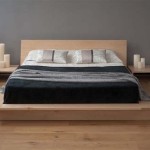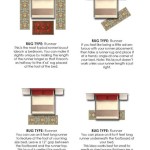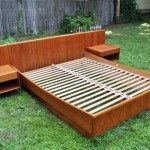How to Make a Full Over Queen Bunk Bed
Building a full over queen bunk bed requires careful planning and execution. This project presents certain complexities beyond standard bunk bed construction due to the differing mattress sizes. This guide outlines the steps involved, emphasizing safety and structural integrity throughout the process.
Planning and Design
Before beginning construction, detailed plans are essential. These plans should include precise measurements of all components, considering the dimensions of both the full and queen mattresses. The design should incorporate adequate support for both levels, accounting for the weight of the occupants and the mattresses. A crucial aspect of the design is the height of the upper bunk. This height should offer sufficient headroom for those in the lower bunk while allowing safe access to the upper bunk. Additionally, the plans should specify the type of lumber, hardware, and joinery techniques to be used. Consulting existing bunk bed plans and adapting them to these specific size requirements can be helpful. Safety features, such as guardrails for the top bunk, should be integrated into the design from the outset.
Material Selection and Preparation
Selecting high-quality lumber is paramount for the structural integrity and longevity of the bunk bed. Kiln-dried lumber is recommended to minimize warping and twisting. Common choices include pine, fir, or spruce. The dimensions of the lumber should be chosen based on the design and weight requirements. All lumber should be inspected for defects and planed smooth before assembly. Hardware, including screws, bolts, and connecting plates, should be heavy-duty and appropriate for the stresses they will bear. Pre-drilling holes before screwing or bolting components together is a best practice to prevent splitting the wood. Precise measurements and careful marking of the lumber are crucial to ensure accurate cuts and assembly.
Constructing the Frame
The frame construction begins with building the individual bed frames for both the full and queen sizes. These frames typically consist of a rectangular frame with supporting cross members. The queen frame, being larger and supporting more weight, requires more robust construction and potentially additional support beams. Once the individual frames are complete, the next step is to construct the supporting structure for the upper bunk. This structure generally consists of four vertical posts connected by horizontal rails. The posts should be securely anchored to the lower frame, and the rails provide a solid base for the upper bunk. Mortise and tenon joints, dowel joints, or strong screws and wood glue can be used to join the frame components securely. The height of the posts must be carefully measured to ensure proper clearance for the lower bunk and safe access to the upper bunk.
Adding the Upper Bunk and Securing the Structure
After constructing the supporting structure, the upper bunk frame can be positioned and securely attached to the supporting rails. It is crucial to ensure that the upper bunk is level and stable. Additional bracing may be necessary for added stability, particularly at the corners where the posts meet the rails. Metal brackets or corner braces can be used to reinforce these connections. Once the upper bunk is in place, attach the guardrails. These rails should be high enough to prevent falls and securely fastened to the bed frame. The entire structure should be inspected for stability and any loose connections. Regular screws may not be sufficient for all joints; consider using bolts and nuts, carriage bolts, or robust wood screws for added strength and security.
Finishing Touches
Sanding all surfaces smooth is crucial before applying any finish. This not only enhances the aesthetic appeal but also removes any splinters or rough edges that could cause injury. The choice of finish depends on personal preference and the desired look. Options include paint, stain, or a clear sealant. Applying multiple coats with sanding between each coat will provide a more durable and attractive finish. Ensure that the chosen finish is non-toxic and safe for use in a bedroom environment. Allow ample drying time between coats and before use.
Safety Considerations
Safety should be the paramount concern throughout the entire project. Regularly check and tighten all connections. Ensure the guardrails are securely fastened and of adequate height. The ladder should be securely attached and positioned for easy access. The stability of the entire structure should be tested regularly. Consider adding additional safety precautions such as anti-tip hardware to secure the bunk bed to the wall.

Diy Queen Over Loft Bed Plan Step By Guide For

17 Easy Steps For A Diy Built In Bunk Bed Start At Home Decor

17 Easy Steps For A Diy Built In Bunk Bed Start At Home Decor

Modular Bunk Bed Setup Woodworking Blog S Plans How To Diy Cool Beds

Bunk Bed Split Size How To Book Paper Pattern Plan Diy And Easily Build King Over Queen Full Twin Beds Com

How To Build A Built In Bunk Bed Plank And Pillow

Diy Built In Bunk Beds With Stairs Old Salt Farm

Woodworking Bunk Bed Plans Full Over Queen Free Beds Loft

17 Easy Steps For A Diy Built In Bunk Bed Start At Home Decor

Diy Built In Bunk Beds Lauren Koster Creative







